Emerald hue dominates myriad gardens! As spring tiptoes closer, verdant hues envelop the world: verdure, arboreal giants, flora, shamrocks, festal embellishments, and indeed, even arthropods!
Certain viridian-hued arthropods boast ubiquity in select global domains, while others, less prevalent, exude an almost extraterrestrial allure.
Irrespective of their exotic or mundane provenance, green insects invariably inject a jubilant spirit into the vernal tableau! Herein lie enumerated the preponderant members of the insect realm bedecked in emerald exoskeletons.
1. Praying Mantis (Mantodea)
The Praying Mantis, a riveting and menacing insect, likely ranks among the most identifiable verdant denizens of the terrestrial sphere.
While mantises exist in myriad variations, the Praying Mantis stands out for its characteristic posture, with forelimbs poised in a supplicatory manner. Dubbed the “Preying Mantis” owing to its predatory propensities, these creatures typically sport hues of green, though variations extend to flesh tones, tan, brown, white, or yellow.
Mechanisms Employed by the Praying Mantis in Natural Pest Control
A cohort of enthralling insects comprises the praying mantis. Atop an elongated cervix, their cranial structures adopt a triangular configuration.
When in pursuit, they possess the capacity for complete rotation of their heads. Sporting five ocular organs, comprising two prominent and three diminutive ones, they scan their environs for prospective quarry.
Traditionally bedecked in verdant or sepia tones, these mantids camouflage adeptly within their milieu. Thus ensconced, they lie in wait for unsuspecting prey, often ensconced amidst foliar perches.
To ensnare their diurnal repast, they leverage their forelimbs, each equipped with minute barbs to immobilize their quarry. The velocity at which they manipulate these limbs renders their actions imperceptible to casual observation.
Dietary Preferences of the Praying Mantis
The dietary regimen of these insects primarily comprises crickets, dipterans, lepidopterans, and orthopterans. Additionally, they evince proclivity towards sundry other arthropods that may cross their path, even conspecifics.
A curious facet of their procreative endeavor is the post-coital consumption of the male. Such instances have been empirically substantiated.
Mastering the Art of Camouflage
Upon ensnaring prey, the mantis promptly subdues it by occluding the cervical region, thereby inducing paralysis. Subsequent consumption often ensues, occasionally while the prey yet exhibits vitality.
Commencing the repast at the cervical juncture obviates protracted struggles. Certain species exhibit floral mimickry, leveraging vivid pigmentation to ensnare unwary hummingbirds in search of nectar, and occasionally avian prey.
Reproductive Endeavors of the Praying Mantis
Reproduction typically peaks during summertime, particularly in temperate climes. Come autumn, the female may lay anywhere between 12 to 400 eggs, ensconced within an ootheca, later ossifying into a rigid shell.
The ootheca serves as a protective enclave during inclement weather. Upon emergence in spring, hatchlings often engage in fratricidal cannibalism.
During their nascent phase, aphids and diminutive dipterans constitute dietary staples. Prepubescent mantises undergo multiple moltings ere attaining maturity, inaugurating each subsequent generation.
Molting occasions necessitate expansion and ecdysis of the exoskeleton. This cycle may recur five to ten times prior to ultimate maturation.
Commencement of wing development typically coincides with the penultimate molting. Life expectancy ranges from 10 to 12 months, with females typically succumbing to wintry rigors in colder climes.
Contrary to widespread perception, the mantis assumes the mantle of an ideal pest controller by virtue of its capacity for cryptic concealment.
By shrouding its presence, it eludes detection by potential prey, whilst simultaneously furnishing itself with sustenance. A scrupulous examination of one’s backyard may, indeed, reveal the mantis, ensconced in its favored pursuit: awaiting the unwitting passage of its next quarry.
2. Grasshoppers (Caelifera)
Grasshoppers might seem harmless to us, but they’re farmers’ arch-nemeses, munching on grass, leaves, and crops. Their name fits perfectly thanks to their hopping antics and green munchies.
The most common critter we spot? That’d be the grasshopper, chilling by ponds or fields, chomping on grains, corn, and veggies. But they’re no friends to farmers, wreaking havoc on crops.
Want fewer grasshoppers? Get some robber flies in your garden—they’re pros at snatching them up. And it’s not just flies; frogs, birds, and others join the battle too.
Grasshoppers love fresh grass, so grassy fields are their stomping grounds. Catching them by hand? Good luck with that!
Grasshoppers are skilled hoppers, relying on their hind legs for liftoff. But in dense grass, they’re easier to nab.
Want to catch a bunch at once? Grab a net—like the ones used for butterflies. Easy peasy.
10 Fun Facts About Grasshoppers
- Grasshoppers are super jumpers! They can leap up to 20 times their body length, making them some of the best jumpers in the insect world.
- They have ears on their bellies! Well, sort of. Grasshoppers have tiny ears located on their abdomen, allowing them to hear sounds from their environment.
- Some grasshoppers can change color! They have the ability to adapt their coloration to match their surroundings, helping them blend in and avoid predators.
- Grasshoppers are ancient insects, with fossils dating back over 300 million years. They’ve been around since the time of the dinosaurs!
- They’re herbivores with a big appetite. Grasshoppers munch on grasses, leaves, and crops, sometimes causing headaches for farmers.
- Did you know grasshoppers make music? Male grasshoppers rub their wings or legs together to create a chirping sound, which they use to attract mates.
- They’re a delicacy in some cultures! In parts of Africa and Asia, grasshoppers are considered a tasty snack and are even fried or roasted for consumption.
- Grasshoppers have compound eyes, which means they have multiple lenses that allow them to see in many directions at once.
- Some species of grasshoppers migrate in huge swarms, traveling long distances in search of food and breeding grounds.
- They’re masters of camouflage. Grasshoppers have evolved to resemble leaves or twigs, making them harder for predators to spot.
3. Katydids (Tettigoniidae)
Bush crickets, often called katydids, have an eerie green hue that adds to their spooky vibe. These leaf-like insects are closely related to grasshoppers and crickets, and they’re masters of camouflage, blending seamlessly into their surroundings.
For gardeners, a katydid’s chirping can be quite annoying, not to mention the potential damage they might cause to plants.
Katydids create a characteristic chirping sound that’s audible and can go on for hours, especially at night when they’re most active. Some people even liken their chirps to that of a tiny chick.
The males are the ones belting out these tunes to attract mates, rubbing their wings together to create their own symphony. Interestingly, scientists can gauge the temperature by counting the frequency of katydid chirps. And when a male katydid feels threatened by another, he’ll emit a shrill piping note.
During mating season, a lovesick katydid can serenade for hours, chirping up to 10,000 times an hour! And in ancient China, ladies even kept these melodious insects in golden cages by their beds to lull them to sleep.
Though katydids can be noisy garden guests, they’re generally harmless unless there’s a major infestation. They’re omnivores, dining on a variety of plant materials as well as other insects, fabrics, and even rubber. So while they might be a nuisance, they’re also nature’s clean-up crew in the garden.
10 Fun Facts About Katydids
- Katydids, also known as bush crickets, belong to the family Tettigoniidae, which includes over 6,400 species worldwide.
- These fascinating insects are masters of mimicry, often resembling leaves or twigs to blend into their environment and evade predators.
- Katydids are known for their distinctive chirping songs, produced by rubbing their forewings together. Each species has its own unique song, used primarily for communication and attracting mates.
- Despite their name, katydids are not actually related to true crickets. Instead, they are more closely related to grasshoppers.
- Katydids are primarily nocturnal, meaning they are most active at night. This is when their chirping songs are most commonly heard.
- Males are the primary singers in the katydid world, using their songs to court females. Some species can produce sounds at frequencies beyond the range of human hearing.
- Katydids are found in a wide range of habitats, from forests and grasslands to urban gardens and agricultural fields.
- These insects have long, slender bodies with powerful hind legs adapted for jumping. Some species are capable of impressive leaps, covering distances many times their body length.
- Katydids exhibit a remarkable diversity in coloration and morphology, with species ranging from bright green to brown, and some sporting intricate patterns or spines.
- In addition to their role in ecosystems as prey for various predators, katydids are also important pollinators and contribute to the natural balance of their ecosystems.
4. Aphids (Aphidoidea)
Aphids, also known as plant lice, can wreak havoc on your plants. These tiny, sap-sucking insects come in shades of green, brown, or black, and they can quickly multiply into massive colonies if left unchecked.
These pesky bugs thrive in moderate climates but can be found almost anywhere plants grow. As the weather warms up, you might start to notice them appearing on your plants.
Aphids feed by sucking the sap from plants, particularly targeting new leaves and flower buds. Their presence can cause leaves to curl or become distorted, and in severe cases, it can stunt the growth of plants or even cause them to lose foliage.
One telltale sign of aphid infestation is the presence of ants, attracted by the sweet honeydew aphids produce. Ants also protect aphids from predators, making it harder to control their population.
To tackle aphids without resorting to chemicals, you have several options. One method is simply to hose them off your plants or manually remove them. Crushing aphids releases a chemical signal that warns others to flee, helping to disperse the colony.
Another effective and chemical-free solution is using soapy water. Simply mix grated soap with water and spray it onto the affected plants. This suffocates the aphids without harming your plants.
For a more potent homemade remedy, you can make a garlic spray by soaking chopped garlic bulbs in oil and water overnight. Strain the mixture and dilute it with water before spraying it onto your plants.
Encouraging natural predators like ladybugs, ladybird larvae, hoverflies, and lacewings is another eco-friendly way to control aphids. These beneficial insects feast on aphids and help keep their population in check.
You can also create an inhospitable environment for aphids by placing aluminum foil around the base of plants to reflect sunlight onto the undersides of leaves, where aphids like to hide.
Finally, maintaining the overall health of your garden by properly feeding, watering, and mulching your plants can make them more resistant to aphid attacks. With these simple tips and natural solutions, you can keep your plants healthy and aphid-free without harming the environment.
5. Green Stink Bugs (Chinavia hilaris)
Encountered a Stink Bug? Brace Yourself for the Stench!
We’ve all crossed paths with a stink bug at some point, and let’s be honest – they really live up to their name! Whether they’re sporting black and orange or green attire, their stench remains just as foul.
Meet the Stink Bugs
Stink bugs, also known as shield bugs, hail from the Hemiptera family. They’ve earned their moniker because, well, they stink! These little critters aren’t usually harmful to humans (aside from the rare bite), but their pungent aroma can pack a punch.
More Stinky Facts
Crush a stink bug, and you’re in for a smelly surprise. These bugs come equipped with glands on their thorax that release a putrid liquid when threatened. It’s their way of saying, “Back off, predators!”
Handle them with care, because squashing a stink bug will definitely release an unpleasant odor. And here’s the kicker – that stench attracts even more stink bugs to the scene. So, think twice before you go on a bug-squishing spree.
Stink bugs are most active from spring to late fall and can be found all across the US, especially in the South. They’re drawn to lights and warmth, which is why they often find their way into homes. After a rainy spell, you might even spot swarms of them buzzing around streetlights.
These nocturnal nuisances might meet their demise after a night of buzzing around lights, but their stench lingers on.
Adult stink bugs sport four wings, while the younger ones, called nymphs, are wingless. But otherwise, they look pretty similar, with adults just having an extra set of wings.
What’s on the Menu?
Stink bugs are vegetarians through and through. Armed with piercing-sucking mouthparts, they feast on the juices of plants, veggies, and fruits. That’s why you’ll find them lurking in gardens, flower beds, and shrubs, chomping away on tomatoes, melons, and beans.
Their natural green and brown hues help them blend seamlessly into their veggie-filled surroundings, making them tricky to spot.
But here’s the problem – stink bugs aren’t exactly welcome guests in the garden. Their voracious appetites and rapid reproduction can wreak havoc on crops, causing damage and discoloration that makes fruits and veggies unsellable.
6. Cucumber Beetles (Acalymma vittatum F. )
Meet the Spotted Cucumber Beetle: Not Your Friendly Ladybug!
Ever mistaken a spotted cucumber beetle for a green ladybug? Easy mistake, but these little guys aren’t the helpful garden helpers like ladybugs. In fact, they’re a major menace to plants and can wreak havoc on crops.
These pesky beetles have a particular fondness for cucumber plants, but they won’t hesitate to munch on melons, cantaloupes, pumpkins, corn, and beans either. They’re not picky eaters – they’ll gobble up leaves and flowers alike, stunting growth and reducing yields. Plus, they can spread nasty bacterial diseases that are tough to treat.
And here’s the kicker – while cucumber plants might bear the brunt of their appetite, winter melons aren’t safe either. These beetles and their larvae are ruthless, chomping on roots and causing even more damage.
But fear not! There’s a natural solution: Neem oil. A spritz of this stuff on your plants can zap cucumber beetles on contact, helping to keep your garden pest-free and your crops thriving.
10 Fun Facts about Cucumber Beetle
7. Tomato Worms (Manduca quinquemaculata)
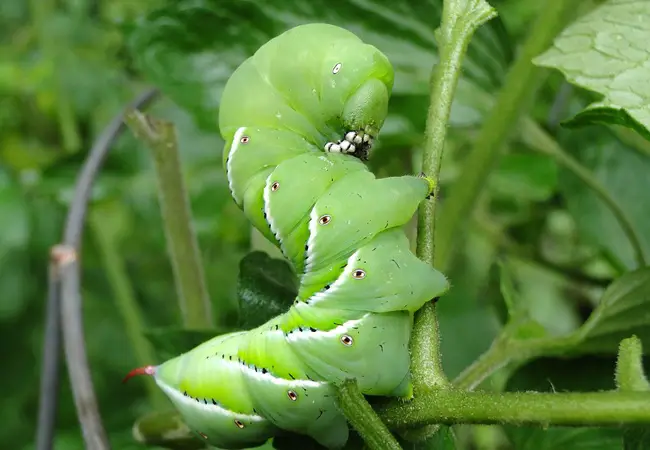
Watch Out for Tomato Worms: Cute but Destructive!
Don’t be fooled by their adorable looks – tomato worms can wreak havoc in your garden. These vibrant green caterpillars may seem harmless, but they eventually transform into hawk moths. After all the effort you’ve put into nurturing your tomato plants, it would be a shame to see them fall victim to pesky pests and plant diseases.
But fear not! Most tomato troubles can be avoided or remedied with the right approach. Simple practices like proper soil care and watering can prevent many issues from taking root. And if things escalate, swift action can salvage your tomato harvest.
Insects and worms are the main troublemakers in the tomato patch, with the hornworm taking center stage. These hefty green caterpillars, adorned with striking white stripes, have a particular fondness for tomatoes. The best defense? Handpick them off your plants and relocate them far away from your garden. Planting dill nearby might also distract them from your precious tomatoes.
To keep these pests at bay, consider preventive tactics like crop rotation and interspersing marigolds among your tomato plants. And if things get hairy, insecticidal soap and ladybugs can come to the rescue.
Stay vigilant! Regular garden checks and swift action at the first sign of trouble can nip tomato woes in the bud, ensuring a bountiful harvest for your enjoyment.
10 Fun Facts About Tomato Worms
- Despite their name, these caterpillars don’t limit themselves to tomatoes. They’re also known to munch on other plants from the nightshade family, including peppers, eggplants, and potatoes.
- Tomato worms are masters of disguise, blending seamlessly with the foliage of their host plants thanks to their green coloration and white stripes, which mimic the veins of leaves.
- These voracious eaters can devour entire tomato plants in a matter of days, making them a serious threat to home gardens and commercial crops alike.
- Despite their destructive tendencies, tomato worms are surprisingly large and impressive creatures, often reaching lengths of up to four inches.
- One of the most fascinating aspects of tomato worms is their life cycle. After gorging themselves on leaves, they burrow into the soil to pupate, emerging as large, striking hawk moths.
- Tomato worms are a favorite food source for many birds, including robins, sparrows, and mockingbirds. Some gardeners even attract birds to their gardens to help control tomato worm populations.
- While tomato worms may seem like solitary creatures, they’re often plagued by tiny parasitic wasps that lay their eggs on the caterpillars. These wasp larvae feed on the insides of the tomato worms, ultimately killing them.
- Despite their large size, tomato worms are surprisingly well camouflaged, making them difficult for predators to spot among the foliage of tomato plants.
- Some gardeners employ natural methods to control tomato worm populations, such as introducing beneficial insects like ladybugs and lacewings, which feed on the eggs and larvae of tomato worms.
- While tomato worms may be a nuisance to gardeners, they play an important role in the ecosystem as both prey for other animals and pollinators as adult hawk moths.
8. Glorious Beetles (Chrysina gloriosa)
Meet the Glorious Beetle: Nature’s Green Jewel!
The Glorious Beetle, also known as the Glorious Scarab and scientifically named Chrysina gloriosa, is a true gem of North America. With its vibrant green hue, it’s no wonder it’s considered one of the most stunning beetles in the region, especially in the sunny landscapes of the southwestern United States.
These magnificent insects have a distinct appearance, boasting a pronounced head, wing sheath, and legs, coupled with a typically flat abdomen. While adults munch on leaves, their larvae have a taste for the cortex of branches and stems, leaving behind a sticky secretion that can resemble glue.
Size-wise, Glorious Beetles come in all shapes and lengths, ranging from less than a centimeter to over eight centimeters. They sport petite heads, short antennae, and dainty feet. Larvae, on the other hand, are long, flat, and milky white, with most preferring to feast on tree bark, although some opt for a leafy diet. Serious damage caused by these beetles can even lead to the bursting of tree bark.
These beauties are creatures of the sun, relishing daylight and often basking in the sunny spots on tree trunks. With their strong wings, they’re capable of impressive flights, covering long distances with ease. While they might be a challenge to catch, they’re not exactly speed demons when they’re perched on tree trunks, often moving at a leisurely pace.
10 Fun Facts About Glorious Beetle
- These beetles are native to North America and are particularly renowned for their striking green coloration, which helps them blend seamlessly with the vegetation in the southwestern United States.
- Despite their name, Glorious Beetles aren’t just visually stunning – they’re also fascinating creatures with a range of unique characteristics.
- Glorious Beetles prefer to inhabit humid areas and can often be found resting in sunny spots on tree trunks, enjoying the warmth of the sun.
- Adults feed on leaves, while larvae have a penchant for munching on the cortex of branches and stems, leaving behind a sticky secretion that resembles glue.
- These beetles exhibit a wide range of sizes and shapes, with some individuals measuring less than a centimeter while others can exceed eight centimeters in length.
- Larvae of Glorious Beetles are typically long, flat, and milky white, and they primarily feed on tree bark, although some species may also consume leaves.
- Severe damage caused by Glorious Beetles can result in the bark of trees bursting, highlighting the impact these insects can have on their environment.
- Glorious Beetles are active during the day and are highly capable of flying, allowing them to travel long distances in search of food and suitable habitat.
- Despite their beauty, Glorious Beetles can be elusive and difficult to catch, often moving slowly when perched on tree trunks and rarely crawling.
- These remarkable insects play an important role in their ecosystems as both consumers and decomposers, contributing to nutrient cycling and the health of forest habitats.
9. Green Lacewing (Chrysoperla rufilabris)
Harnessing Nature’s Power: Lacewings for Natural Pest Control
Looking to keep pests at bay in your garden, greenhouse, or fields? Lacewings might just be your secret weapon. These beneficial insects are abundant in North America, particularly in humid spots like forest edges, but they can thrive almost anywhere – from fields to gardens to greenhouses. And the best part? You can even order lacewing larvae online for easy pest control.
Lacewings are masters of disguise, hiding behind leaves and stems to blend seamlessly into their surroundings. But don’t let their delicate appearance fool you – it’s the larvae that pack the punch when it comes to pest control. Aptly nicknamed “aphid lions,” these carnivorous critters feast on soft-bodied pests like aphids, thrips, mealybugs, caterpillars, and even pest insect eggs.
While adult green lacewings may nibble on aphids occasionally, they’re more interested in sipping pollen, nectar, and a sugary substance called “honeydew.” Honeydew is the sweet liquid produced by sucking insects like aphids and scale insects. And here’s the twist – lacewings are drawn to areas rich in honeydew, creating a natural cycle of pest control. By chowing down on honeydew and snacking on aphids, lacewings establish a perfect balance of predator and prey, making them an incredibly effective form of natural pest control.
10 Fun Facts About Green Lacewings
- Green Lacewings are found throughout North America and are particularly abundant in regions with diverse plant life, such as forests, fields, and gardens.
- Despite their fragile appearance, Green Lacewings are fierce predators during their larval stage, earning them the nickname “aphid lions.” These voracious hunters feast on soft-bodied pests like aphids, thrips, mites, and caterpillars, helping to keep garden pests in check.
- Lacewing larvae are equipped with sickle-shaped jaws and a ferocious appetite, making them highly effective at controlling pest populations in gardens and agricultural fields.
- Adult Green Lacewings are also beneficial to gardens, although they primarily feed on pollen, nectar, and honeydew rather than pests.
- Green Lacewings are attracted to areas where honeydew is abundant, as it serves as a valuable food source for both adults and larvae.
- These insects are skilled flyers and can cover long distances in search of food and suitable habitat.
- Green Lacewings undergo complete metamorphosis, starting as eggs laid on plant leaves or stems. The larvae hatch and undergo several molts before pupating and emerging as adults.
- In addition to their pest control prowess, Green Lacewings also play a role in pollination, contributing to the reproductive success of many plant species.
- Gardeners and farmers often use Green Lacewings as a natural alternative to chemical pesticides, harnessing the power of these beneficial insects to protect their crops.
- Green Lacewings have earned a well-deserved reputation as valuable allies in the fight against garden pests, making them beloved creatures among gardeners and nature enthusiasts alike.
10. Ambush Bugs (Amblythyreus)
image credited: Wikipedia
Ambush bugs might just be the stealthy assassins of the insect world. They’re often mistaken for their sleeker cousins, the assassin bugs, but they’ve got their own unique flair.
Unlike their slender assassin relatives, ambush bugs rock a stockier build and beefier front legs. Plus, their heads are more stubby and less narrow.
Belonging to the order Hemiptera, these bugs share some traits with leaf-footed and stink bugs. They’ve got those classic piercing and sucking mouthparts and thin wings with clear tips. And they’re all part of the big family called Reduviidae.
Now, here’s where things get interesting. Ambush bugs might be in the assassin bug club, but they’ve got their own style. Just like their cousins, they go through a major makeover as they grow up. Their eggs get laid on leaves and stems, and the babies molt four times before becoming full-fledged ambush bugs.
And boy, are they skilled hunters! They use those chunky front legs to snatch up unsuspecting prey, then dive in with their proboscis to slurp up the goods. Their saliva even packs a paralyzing punch to keep their meals from wriggling away.
As their name suggests, these bugs are all about the sneak attack. You’ll often find them chilling on flowers, waiting for their next meal to stroll by. They can fly, but not too gracefully, and sometimes they end up as snacks for spiders or mantises. But hey, that’s just nature doing its thing.
Despite their deadly skills, ambush bugs are actually pretty cool to have around. They help keep pest populations in check, making them valuable allies for gardeners.
These bugs are on the petite side, usually measuring less than half an inch long. But don’t let their size fool you – they’ve been known to take down insects way bigger than themselves, like bumblebees.
Now, here’s a fun fact: while ambush bugs aren’t usually looking to snack on humans, they might give you a little nip if you disturb their turf. But hey, they’ve got a backup plan – their body fluids taste pretty nasty, just like their stink bug cousins.
So, next time you’re hunting for four-leaf clovers, keep an eye out for any ambush bugs lurking in the shadows!

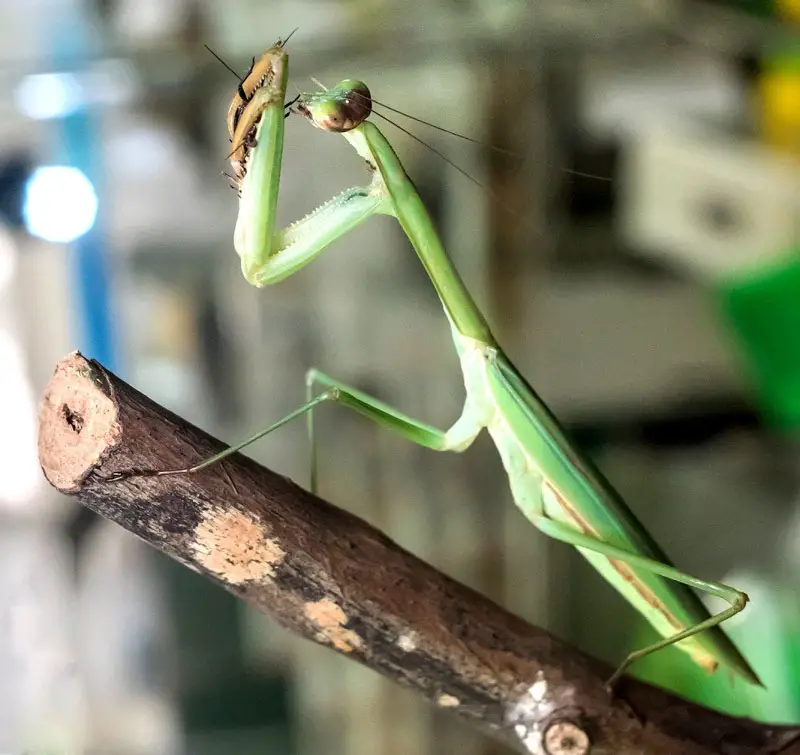
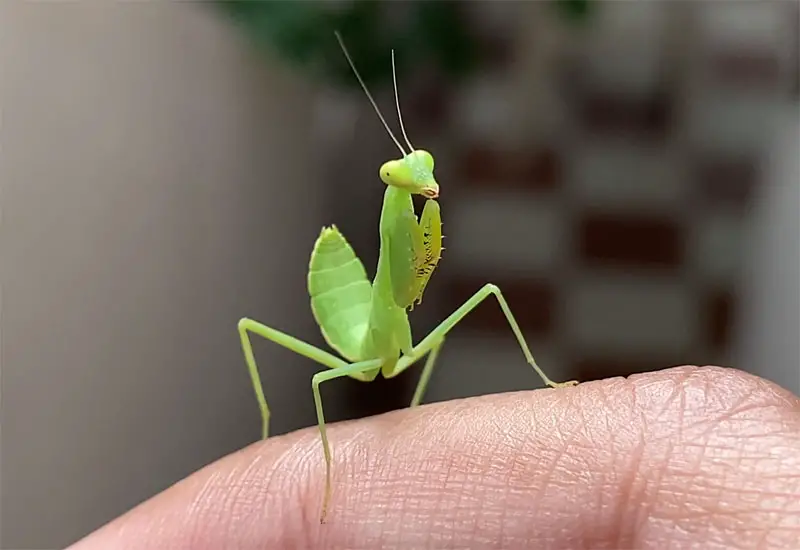
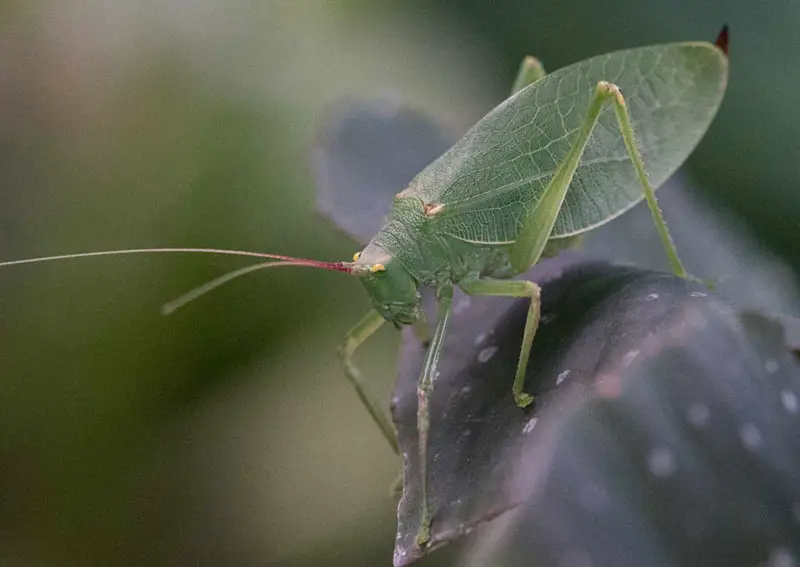
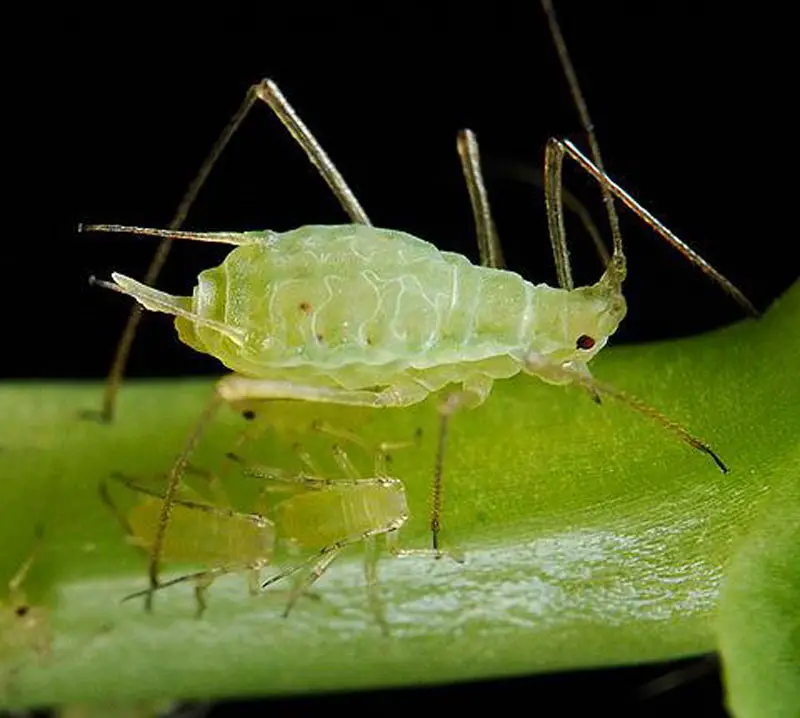
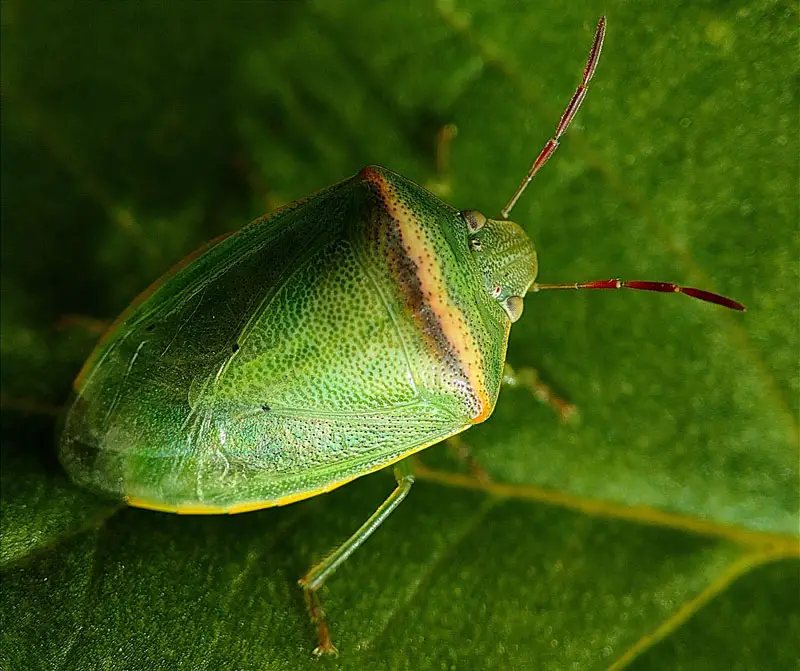
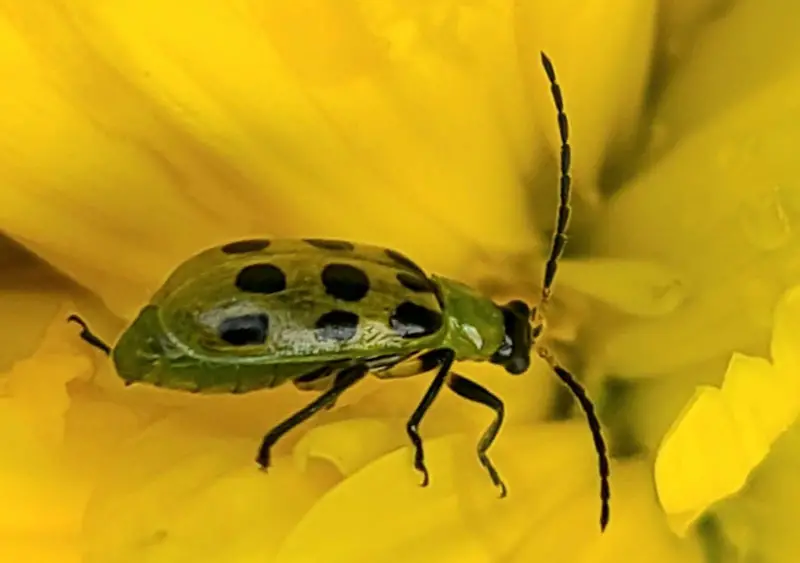
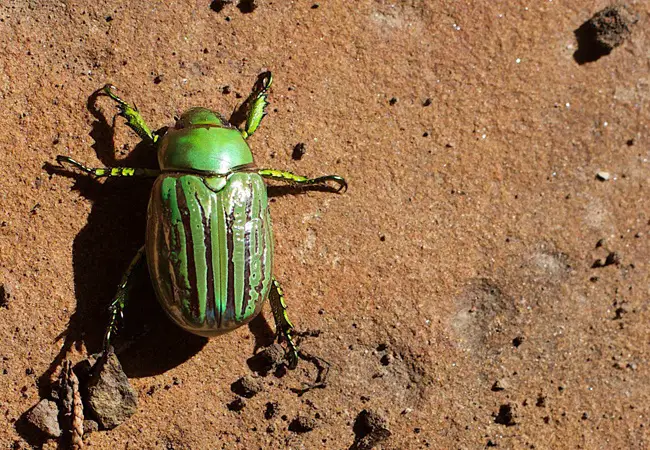
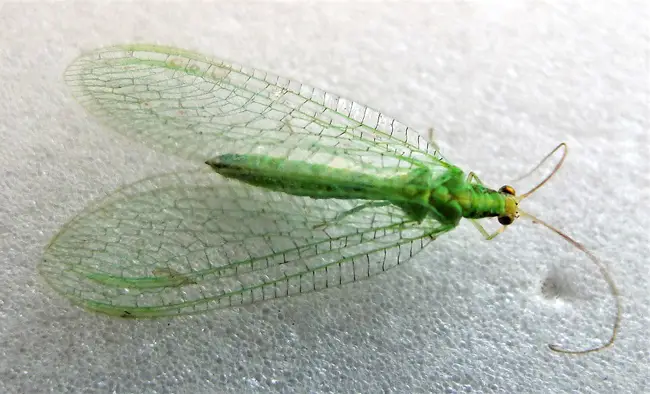
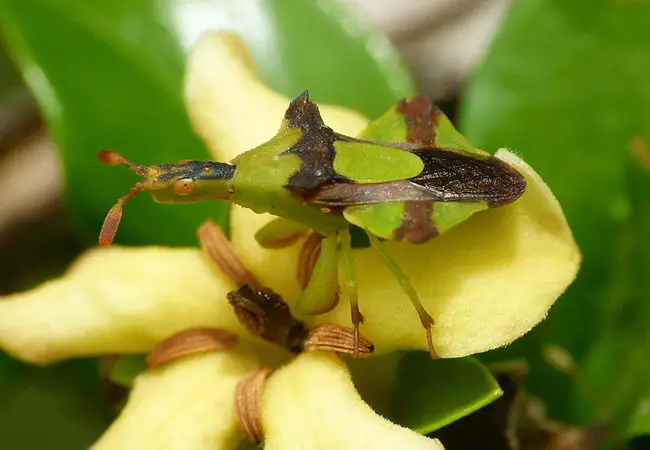

Got the information needed
Very informative and the photos are very clear, You need to proof read your post.
Thanks for the comment. I have proofread it. Hope it got improved.
Thanks for this beautiful article.